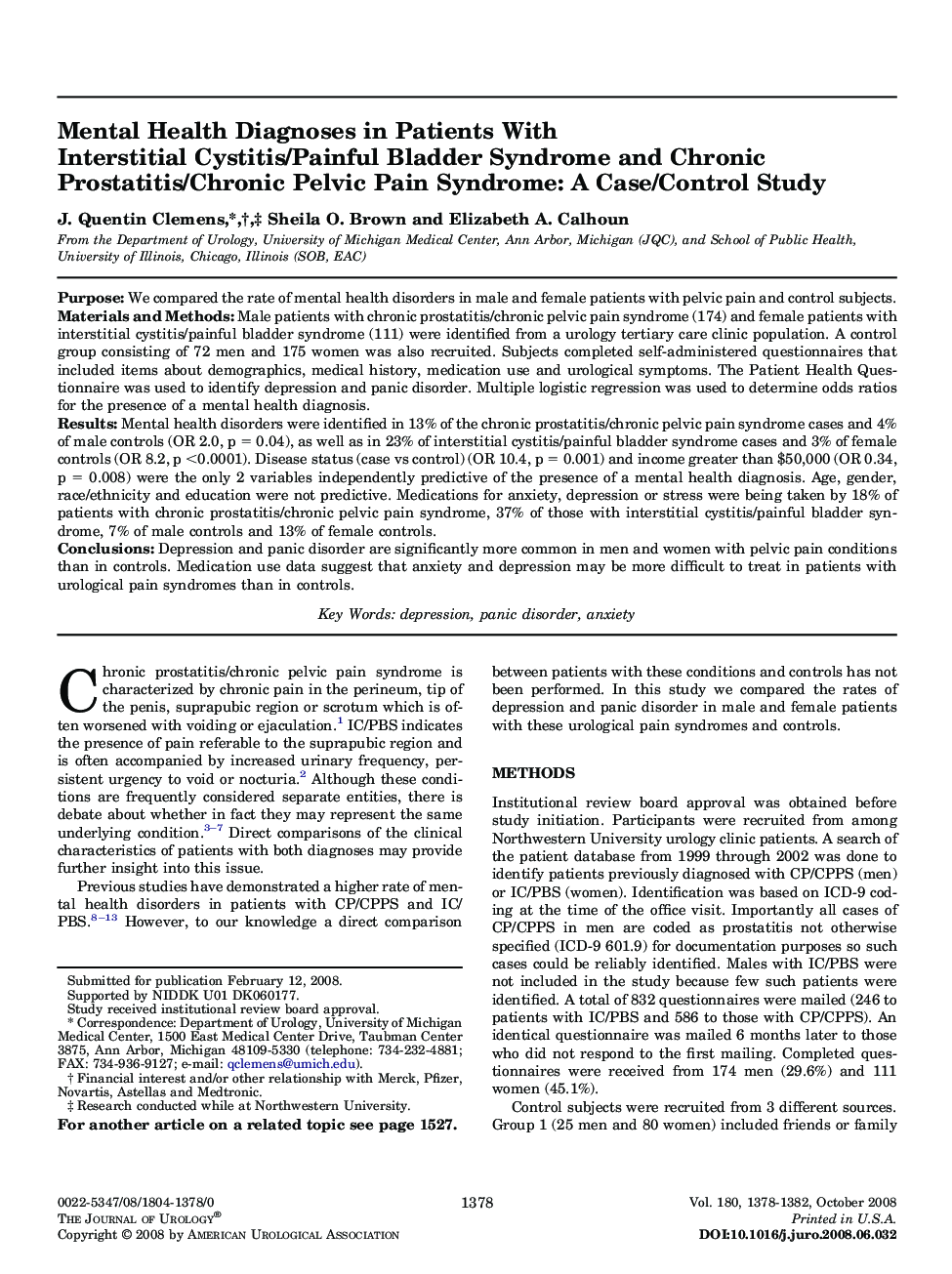| Article ID | Journal | Published Year | Pages | File Type |
|---|---|---|---|---|
| 3876780 | The Journal of Urology | 2008 | 5 Pages |
PurposeWe compared the rate of mental health disorders in male and female patients with pelvic pain and control subjects.Materials and MethodsMale patients with chronic prostatitis/chronic pelvic pain syndrome (174) and female patients with interstitial cystitis/painful bladder syndrome (111) were identified from a urology tertiary care clinic population. A control group consisting of 72 men and 175 women was also recruited. Subjects completed self-administered questionnaires that included items about demographics, medical history, medication use and urological symptoms. The Patient Health Questionnaire was used to identify depression and panic disorder. Multiple logistic regression was used to determine odds ratios for the presence of a mental health diagnosis.ResultsMental health disorders were identified in 13% of the chronic prostatitis/chronic pelvic pain syndrome cases and 4% of male controls (OR 2.0, p = 0.04), as well as in 23% of interstitial cystitis/painful bladder syndrome cases and 3% of female controls (OR 8.2, p <0.0001). Disease status (case vs control) (OR 10.4, p = 0.001) and income greater than $50,000 (OR 0.34, p = 0.008) were the only 2 variables independently predictive of the presence of a mental health diagnosis. Age, gender, race/ethnicity and education were not predictive. Medications for anxiety, depression or stress were being taken by 18% of patients with chronic prostatitis/chronic pelvic pain syndrome, 37% of those with interstitial cystitis/painful bladder syndrome, 7% of male controls and 13% of female controls.ConclusionsDepression and panic disorder are significantly more common in men and women with pelvic pain conditions than in controls. Medication use data suggest that anxiety and depression may be more difficult to treat in patients with urological pain syndromes than in controls.
